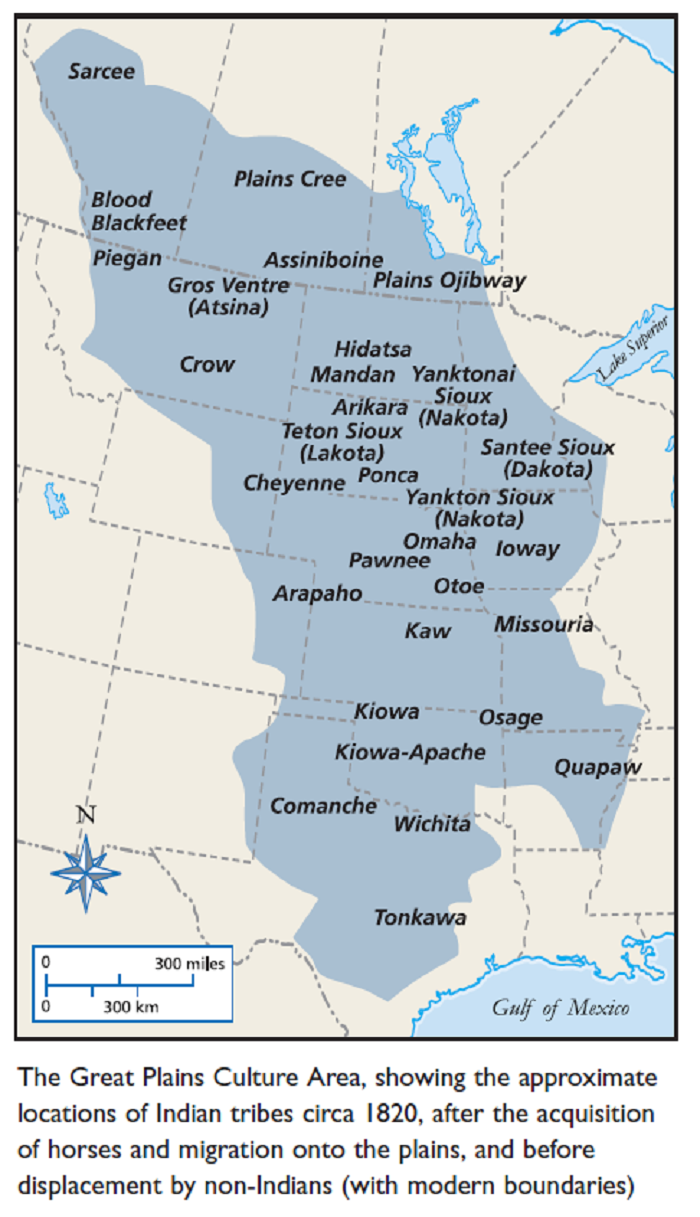
The association of Native Americans with the Plains Indians is a common misconception among those who have limited knowledge of their diverse tribes and lifestyles. While the Plains Indians are well-known for their horsemanship, buffalo hunting, tipis, and warbonnets, it is incorrect to assume that all Native Americans lived and dressed like them.
In reality, Native American culture is incredibly diverse, and generalizing about the numerous nations is a challenging task. The Plains Indians are famous for several reasons. Many of these tribes maintained their traditional lifestyle for longer periods compared to other Native American groups, well into the 19th century. The final wave of Indian wars primarily involved Plains tribes, and these conflicts have been repeatedly portrayed in books, movies, and television.
The Great Plains Culture Area refers to the vast region extending from the Mississippi River valley to the Rocky Mountains, and from the Canadian provinces of Manitoba, Saskatchewan, and Alberta to central Texas. This region is characterized by treeless grasslands, stands of trees, and highlands, including the Ozarks, the Black Hills, and the Badlands.
The Plains Indian way of life was dominated by the hunting of animals, including antelope, deer, elk, bears, wolves, coyotes, rabbits, and the American bison, or buffalo, which provided food, shelter, clothing, and tools. The introduction of horses by Europeans allowed tribes to become more mobile and migrate to the plains, adopting a nomadic lifestyle.
Plains tribes consisted of bands of related families, with each band having a few hundred members. They lived separately most of the year, coming together during the summer for communal buffalo hunts and religious rituals. However, it is worth noting that some tribes of the tall-grass prairies had permanent villages and continued farming, unlike those of the short-grass high plains.
It is essential to understand that the Great Plains Culture Area is only a part of the rich and diverse Native American culture. The association of Native Americans with the Plains Indians should not be used to generalize about the numerous nations, which have different customs, religious beliefs, and ways of life.
__________________________________________
cThe Plains Native Nations are a diverse group of Native American tribes that traditionally inhabited the Great Plains region of North America, spanning across parts of the United States and Canada. While each tribe has its own distinct culture, language, and traditions, they share some common features such as a nomadic or semi-nomadic lifestyle and dependence on the American bison for food, clothing, and shelter. Here are some notable Plains Native Nations:
-
Lakota (also known as the Sioux): The Lakota are one of the three major divisions of the Sioux people, along with the Dakota and Nakota. They are known for their fierce warrior culture, horsemanship, and resistance against westward expansion by the U.S. government in the 19th century, most famously in the Battle of Little Bighorn.
-
Cheyenne: The Cheyenne are another prominent Plains tribe, originally from the Great Lakes region before migrating west. They formed a strong alliance with the Lakota and were involved in several conflicts with the U.S. Army during the Indian Wars, including the Sand Creek Massacre and the Battle of Little Bighorn.
-
Arapaho: The Arapaho are an Algonquian-speaking tribe that historically occupied parts of Colorado, Wyoming, Kansas, and Nebraska. They were skilled buffalo hunters and horsemen, and often allied with the Cheyenne against their common enemies, the Pawnee and Sioux.
-
Comanche: The Comanche are a Plains tribe from the southern part of the Great Plains, primarily in present-day Texas, Oklahoma, and New Mexico. They were known for their exceptional horsemanship and as fierce warriors, and were referred to as the "Lords of the Plains" by the neighboring tribes.
-
Pawnee: The Pawnee are a Caddoan-speaking tribe originally from present-day Nebraska and Kansas. They were known for their farming practices, as well as their skill in hunting buffalo. The Pawnee were often at odds with the Sioux, Cheyenne, and Arapaho.
-
Blackfoot Confederacy: The Blackfoot Confederacy is a group of four closely related Algonquian-speaking tribes, including the Siksika, Kainai, and Piikani in Canada, and the Blackfeet in the United States. They lived in the northwestern Plains region and were skilled buffalo hunters.
-
Kiowa: The Kiowa are a Plains tribe that primarily inhabited areas in present-day Oklahoma, Kansas, and Texas. They were known for their warrior culture, alliances with the Comanche, and distinctive art and storytelling traditions.
-
Crow: The Crow, or Apsáalooke, are a Siouan-speaking tribe from the Yellowstone River Valley area in present-day Montana and Wyoming. They were known for their skilled horsemanship and as expert hunters and warriors.
These are just a few examples of the diverse Plains Native Nations, each with their own unique history and cultural heritage.